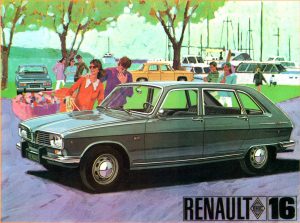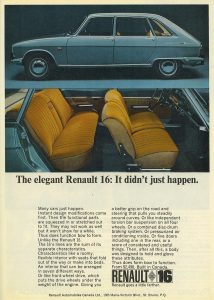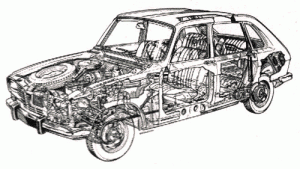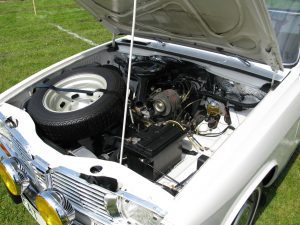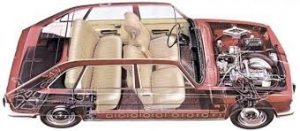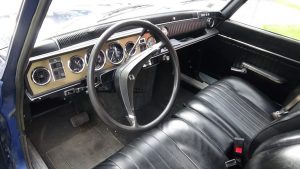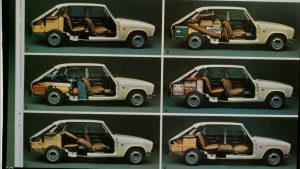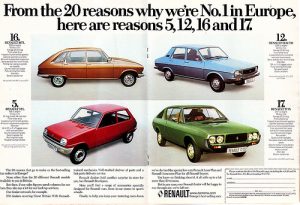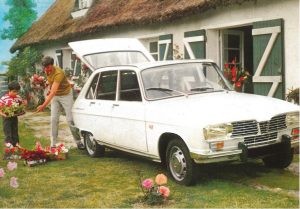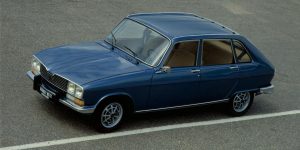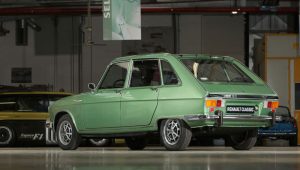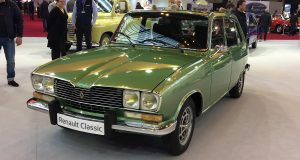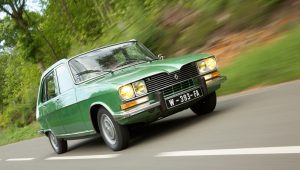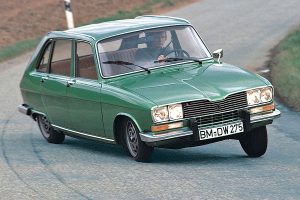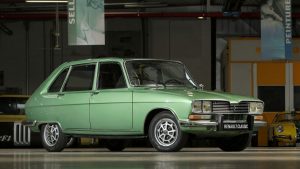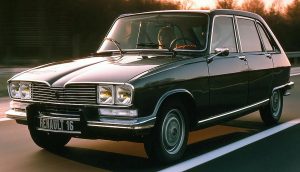As we welcome 2019, we take a look back to almost 54 years ago when a French automaker introduced a new innovative body style that would change how family cars are made. The Renault 16 (R16) was introduced in 1965 to augment the Renault product line which included small cars like the Renault 4 and Renault Dauphine. The R16 was designed to replace the larger Renault Frégate family sedan, which had a modest production run of 163,383 units from 1951 to 1960. What Renault hadn’t planned on was to introduce a game-changer.
With the R16 and its modern, practical body style, Renault practically introduced the 5-door hatchback to the mid-size family segment. The R16 was styled halfway between a sedan and a station wagon and journalists of the day struggled to describe it since the term hatchback has not been coined yet. Motoring Illustrated described the R16 in its May 1965 issue as a “large family car that is neither a 4-door saloon (sedan) nor an estate (wagon)”. They concluded that it was “a little different.”
Technical Innovations
Like the Citroën Traction Avant, the R16 featured front-wheel-drive (FWD) with its liquid-cooled 4-cylinder aluminum engine mounted longitudinally (instead of transverse) behind the transmission/transaxle.
The north-south arrangement of the gearbox-transaxle-engine kept the weight closer to the center of the car and contributed to the R16’s handling and balance but made servicing the engine a bit difficult. The radiator uses an electric cooling fan while the suspension uses torsion bars.
To accommodate the torsion bar suspension, the R16’s left wheelbase is 70 millimeters or 2.76 inches longer than the right. The rear wheels may not line up perfectly but Renault designers used this peculiarity and added a long suspension travel and soft seats to give it a particularly smooth ride even over big bumps.
Shifting gears through a column-mounted lever provided a spacious front cabin while the 5-door hatchback body style and uneven wheelbase provides a flexible interior that could be configured in seven different ways.
Model Changes
R16 production started in March 1965 at the Renault Sandouville plant in Le Havre, France while its formal launch was held at the Geneva Motor Show. Sales started in France in April while sales in other left-hand-drive countries started in June. Right-hand-drive units were marketed a few months later and became one of Britain’s most popular imported cars.
Initially, the R16 was marketed as Renault 1500 Grand Luxe (GL) with a 54hp 1470cc engine while a 160km/h 1565cc TS was introduced in March 1968. The TA automatic transmission version was launched in 1969 while the top-of-the-line Renault 16 TX with 1647cc engine was unveiled at the Paris Motor Show in October 1973.
It was equipped with four rectangular headlights, large turn signal lights, Gordini wheels, a rear spoiler, a rear windscreen wiper, a laminated windshield, automatic seatbelts, and optional air conditioning. It was one of the first family cars to feature power windows for the front doors and central door locking as standard equipment.
In October 1974, a black plastic grille replaced the chrome one in all models except for the TX. The TA was discontinued in 1975 while the 1647cc engine from the TX became standard in all models. The TS was discontinued in 1976 but production continued until 1980, five years after the arrival of the larger Renault 20. By the time the R16 ceased production, most European car manufacturers had at least one hatchback on sale. Overall, 1,845,959 Renault 16s were produced during its 15-year production run. It was marketed in the Philippines but it was not as popular or as successful as it was in the European market.
Award-Winning Influential Model
The R16 won praises for its spacious and comfortable interior as well as the practicality offered by its effectively unique hatchback body style. In 1965, it was voted European Car of the Year by a board of European motoring journalists. It was the third winner of the prestigious award and the first French winner.
In 1970, British racing driver Stirling Moss praised the R16 as the “most intelligently engineered automobile” he has ever encountered. The R16’s bird-beak grille design was admired by Renault styling chief Patrick le Quément that a subtle tribute was later incorporated into 1990’s Renault models such as the Laguna, Mégane and Scénic.
Because of its large production numbers, the R16 cannot be considered as rare. In fact, it can be regarded as ubiquitous during its time. Because of its reliability, most R16s were driven to the ground and left to rot. In fact only a few well-preserved examples are available today, even in its homeland of France.
Because of its slab-sided angular practical design and family-oriented utility, it cannot be considered as sexy or highly desirable. Thus, it has not become a collectible car even though it was one of the most ground-breaking automobiles of its era. But what it lacks in collectibility, it makes up in character. And if you’re a Renault 16 lover, that is reason enough to find and keep one.
 Power Wheels Magazine A Notch Above
Power Wheels Magazine A Notch Above

